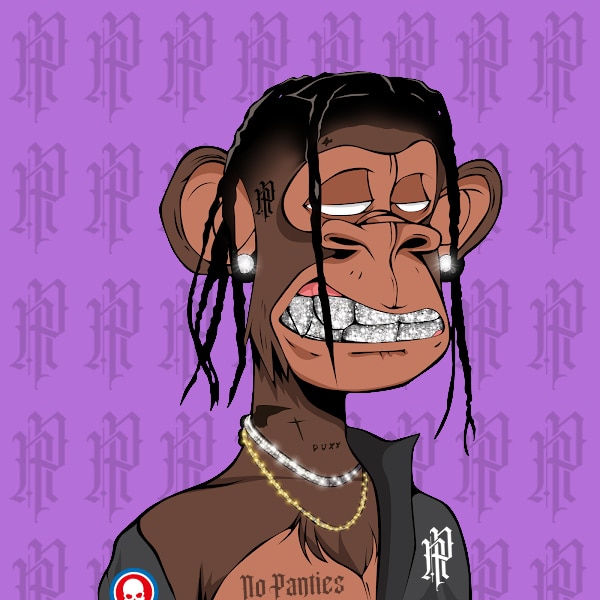
no panties club
JOIN THE CLUB
The first brand of clothing that YOU belong to, with each purchase receive one of the 2666 free NFT, of the brand. Collect these NFTs, Holder (keep) an NFT will allow you to make decisions, participate in votes and win all kinds of gifts and goodies. Help the brand take off to increase the price of your NFTs and be able to resell them for gold later. (note you will lose your rights to the brand and give them to the buyer)
NFT
for every purchase on the website
You will receive a secret card with a QR code to scan, which will allow you to claim your NFT, you will receive it within 24 to 48 hours directly in your ETH Wallet (Metamask, Coinbase, etc…)


to start
You must create a wallet (virtual wallet) on one of these 4 services. This “Wallet” will allow you to be sent your NFT on which it will be stored, to resell it on sales platforms such as OPEN SEA and possibly buy or receive cryptocurrency.
next
SCAN the qr code of your card
Open your smartphone’s camera. Aim at the QR code and tap on the site to open. Tap > RECOVER NFT.
Fill in the form with the questions asked, as well as the identification number of your “wallet”, which will allow us to send you your NFT.

You will receive your NFT in the next few hours. You can now join our DISCORD to check your NFT.
explicative videos
explanation

Create your digitall wallet

How to scan the QR and complete the form to claim your NFT

How to validate your "Holder" status on Discord

How to sell your NFT on Opensea
PREMIUM COLLECTION
Rebel ape club

GO ON THE HUNT !
The rarest secret hidden NFTs will be hidden in certain secret locations, by our team and the community around the world. Will you be able to find them and benefit from an exclusive drop of an Epic or Legendary NFT?
Treasure hunt
SEARCH FOR HIDDEN NFTs ALL OVER THE WORLD
COME BACK HERE LATER FOR GPS LOCATION
COME BACK HERE LATER FOR THE DATE
COME BACK HERE LATER FOR THE HINT
Frequently asked questions
What you want to know
New to NFT and cryptocurrency? You are wrong because she represents the future.
It is normal to be suspicious and to ask questions especially about what is unknown to us, here are the most common questions we are asked.
What is an NFT, concretely?
From the English “Non Fungible Token”, an NFT is “a non-fungible digital unit, associated with an intangible object whose authenticity and traceability it guarantees thanks to blockchain technology”, as defined by the Le Robert dictionary.
In other words, an NFT is a token or token issued on a blockchain that embeds a reference to a digital file, associating it indelibly with that file.
It is a digital asset that is not interchangeable like a cryptocurrency (such as Bitcoin or Ethereum): each NFT is distinguished by a unique digital file to which it is attached.
These tokens are then considered authentic copies of these digital files. Note, however, that NFTs can also be associated with physical objects, such as paintings or sculptures, diamonds, jewelry or luxury goods.
Are NFTs works of art?
No, since they are above all certificates of authenticity. Additionally, Wikipedia declined to call NFTs an art form, given their use in so many other areas.
Indeed, despite the fact that the press focuses a lot on the world of art, most NFTs today are not associated with works of art – which represent only 9% of the volume of sales, against the 76% related to collectibles.
That is to say collection images (such as Cryptokitties), kinds of virtual Panini thumbnails (such as Sorare’s football players) or profile images (such as Bored Apes).
Virtually anything that can take a digital format can be sold as an NFT: memes such as the infamous NyanCat sold for over $500,000, HTML protocol code signed by its creator Tim Berners Lee (sold for $5 million), Jack Dorsey’s first tweet (sold for $2.9 million), and Jimmy Wales’ first Wikipedia contribution (sold for $750,000).
Why is the art world interested in NFTs?
In 2014, artist Kevin McCoy created the first art-like NFT: an animation generated by computer code leveraging blockchain to ensure rarity and uniqueness.
This work, which was worth almost nothing at the time, is valued today at 7 million dollars. But it wasn’t until 2017 that the use of NFTs became popular with Rare Pepes and Crypto Punks (whose value now exceeds $100 million).
Following the sale of a digital work by the artist Beeple for $69 million in March 2021 by auction house Christie’s, thousands of artists have embarked on the production of NFT.
Although most are unknown and largely ignored artists, some, such as Beeple, Pak, Tyler Hobbs, Dimitri Cherniak, Hackatao – whose works have sold for tens of millions of dollars – are beginning to be recognized by the world of institutional art.
What interest for artists?
NFTs offer an unprecedented opportunity for artists to protect their digital works and better monetize them with the sale of authenticated and certified copies.
Previously, digital works could only be commercialized through copyright, that is, by granting licenses for the reproduction or performance of these works.
Today, thanks to NFTs, these artists can earn money by simply selling digital copies of their work in the same way as a painter puts his paintings up for sale.
This is how digital art – which had until now remained behind the scenes – takes its first steps in the art market, attracting the interest of many galleries and institutional auction houses, which can now sell unique and authentic copies of digital works.
If I buy an NFT, what do I really own?
In most cases, an NFT does not embed a digital work but just a reference to a digital file representing this work, located elsewhere on the network.
NFTs are just a way to create unique copies (or limited editions) of digital works, thus establishing a new form of “digital rarity”.
Although the file associated with an NFT can be reproduced endlessly, the NFT that incorporates a reference to this file is indeed unique, and cannot be falsified.
Thus, regardless of the number of copies that exist of a digital work, only the holder of the NFT associated with this work will be considered as the holder of an authentic copy. The NFT therefore behaves more like a certificate of authenticity, or even a title deed, making it possible to determine who is the owner of a digital creation – independently of who actually owns the digital files of this work.
Why is the monetary value of NFTs so high, even when their artistic value is questionable?
With the recent appreciation of cryptocurrencies such as Bitcoin and Ethereum, the price of NFTs has skyrocketed to several hundred million dollars!
This wave of speculation has obviously attracted new artists who, overnight, embark on the production of NFT, in the hope of being able to hit the jackpot too.
The art world can no longer ignore this phenomenon.
However, the works resulting from this new gold rush are not always appreciated by the art world, which looks at these self-proclaimed “crypto-artists” with a bit of irony.
Pixelated, low-res artwork with computer glitches reminiscent of 1980s video game aesthetics – that’s what seems to appeal to NFT collectors, who have little interest in established contemporary artwork .
Some recognized artists have nevertheless managed to make themselves known in the world of NFTs like Kevin Abosch and Ai WeiWei, Urs Fischer, Trevor Jones, Tom Sachs.












REBEL APE CLUB #1
0.2 ETH